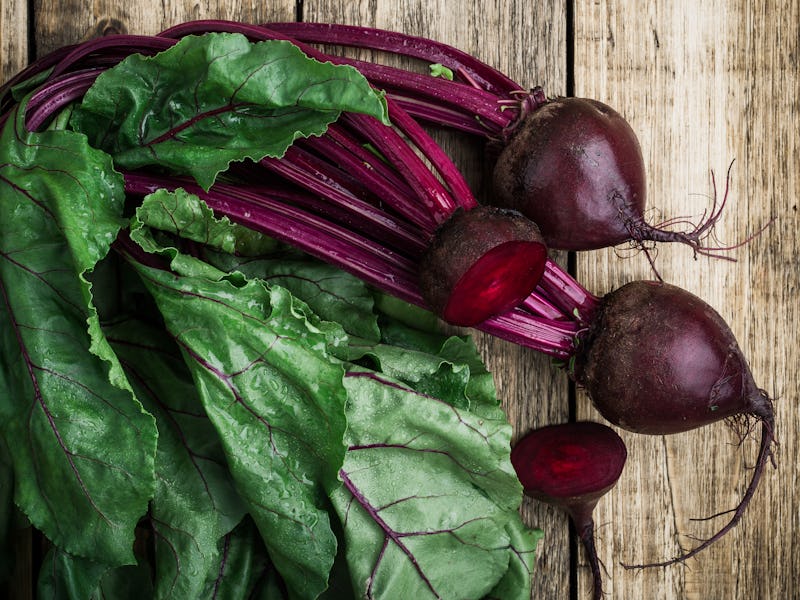Peeing Red: What is beeturia and who gets it?
If you ate beets last night and are seeing red, don't panic.

If you’ve ever feasted on a delicious beet salad at dinner, you may have gotten a surprise the next morning: a reddish tinge to what you left in the bowl. This color shift might look a little like blood, which can be extremely alarming.
While anything red in the toilet bowl is disconcerting, if you’ve consumed beets the night before, you are probably okay. Leslie Bonci, a registered dietician and adjunct instructor in the school of dental medicine at the University of Pittsburgh, tells Inverse, that 10 to 14 percent of the population will — if they eat beets — experience that red toilet surprise. Here’s what you need to know about “Beeturia.”
Why do beets turn some people’s pee and poop red?
Carmen Young, an assistant professor in the Nutritional Sciences at the University of Arizona and a sports dietician, tells Inverse that the pigments found in beets and beetroot that give the vegetable its color are called betanin.
“Betanin has a higher uptake in the gut, meaning that it is absorbed in high concentrations, which more rapidly cause this pigment to be excreted in the urine,” Young says. “The name for beet consumption turning pee red is called ‘beeturia.”
While you’re most likely to hear about beeturia associated with urine, it’s also the name for when that beet color shows up in your poop.
“Feces can be affected just as well as urine when it comes to beeturia,” she says. “It may not seem as common due to the dark color that feces has naturally, making a change in color less noticeable.”
Young adds that we may be more prone to notice beeturia in our urine because it has a quicker “transit time” out of our bodies.
“Betanin has a higher uptake in the gut, meaning that it is absorbed in high concentrations, which more rapidly cause this pigment to be excreted in the urine,” says Carmen Young, an assistant professor in Nutritional Sciences at the University of Arizona.
Are some people more prone to beeturia than others?
Beeturia doesn’t happen to everyone; it occurs in the 10 to 14 percent of people who “cannot break down the betanin, and this causes the urine or poop to be reddish.”
Bonci says some people with iron deficiency may be more likely to experience beeturia than others. A 1999 study published in the Lancet found that this condition occurs in about 66 to 80 percent of people with untreated iron deficiency anemia. The reason for this association isn’t completely clear.
Similarly, people with malabsorption — a range of conditions in which a person’s body doesn’t effectively absorb nutrients — are more prone to beeturia.
Bonci says, “Beeturia is benign, but it is certainly a good idea to have bloodwork done to rule out an underlying iron deficiency.”
How many beets do you need to eat to get beeturia?
Some people may need only to eat a small portion of beets to create a red toilet experience, while others might need to eat large quantities of beets for beeturia to be apparent.
Bonci stressed that beeturia shouldn’t stop someone from eating beets.
“They are such a great source of dietary nitrates that are important for oxygen delivery and also to control blood pressure and may have anti-inflammatory effects as well.”
So if you’re peeing red the morning after a beet feast, don’t panic. Just make sure to get regular checkups with your doctor to ensure your iron levels are where they should be.
This article was originally published on